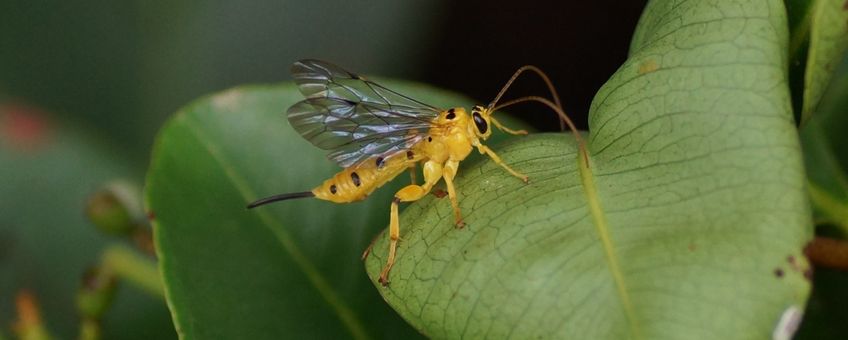
Ovipositor of parasitic wasp could be a model for steerable needles for medical uses
Wageningen University & ResearchFemale parasitic wasps lay their eggs in the larvae of other insects that are often hidden in plants, trees or under the ground. To reach these larvae, many wasps use a long, needle-like tube (the ovipositor) at the end of their abdomen. Parasitic wasps can steer this tube while searching for the larvae. There are no muscles in the ovipositor itself, so they steer the tube with the muscles in their abdomen. It is risky for them to insert this thin tube into hard structures such as tree bark because the ovipositor can bend and buckle in the process. These wasps must therefore have some way to prevent this damage.
Changeable ovipositor
Using high-speed cameras, the researchers recorded the probing behaviour of the wasps in two types of transparent gels. They discovered that the wasps change the shape of the tip to steer the ovipositor. This is possible because the ovipositor consists of three components, one upper part and two lower parts, that can independently slide along each other. The wasps drill through the gel by moving these components back and forth. They can steer the ovipositor on a curved path by keeping the lower parts extended beyond the upper part during the alternating motions. This is facilitated by a natural bending of the tip of the lower parts which occurs after retraction of the upper part Besides providing a steering function, the mutual motion of these sliding components also reduces the risk of buckling and damage.

Steerable probes
These findings could be used in the development of steerable probes, such as needles for minimally invasive surgery. Steerable probes are currently available, but they could be greatly improved with the results from this study. For example, the bending capacity of the probe could be increased by a tip with adaptable curvature. Moreover, probes that have to pass through tissue could possibly be made even thinner by using sliding parts that move back and forth alternately. Finally, this study can also contribute to a deeper understanding of the evolution of parasitic wasps.
Researchers from the Experimental Zoology Group at Wageningen University & Research published these findings last week in Proceedings of the National Academy of Sciences (PNAS).
Text: Wageningen University & Research
Photos: Vengolis, CC BY-SA 3.0 (lead photo: female Xanthopimpla punctata. The ovipositor is longer and more slender than the stingers of aculeate wasps); Ab H Baas, Saxifraga
